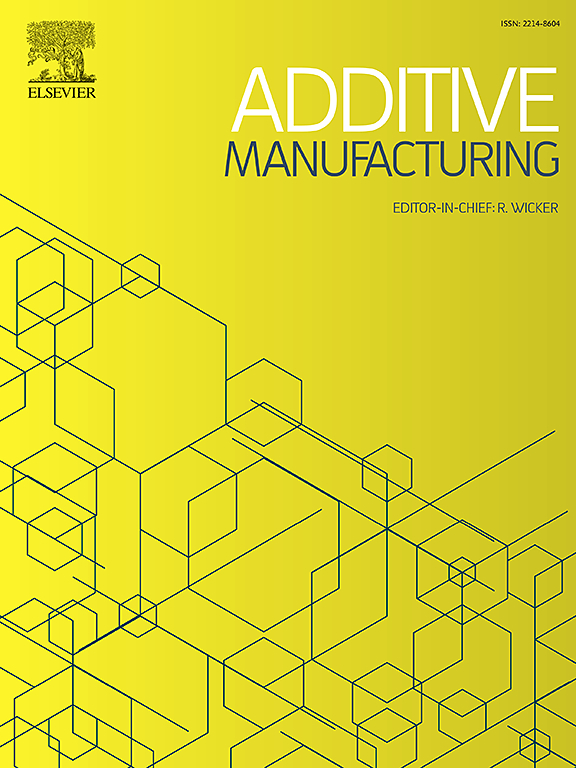UV-curable, 3D printable, thermally conductive polysiloxane composites for thermal interface devices
IF 10.3
1区 工程技术
Q1 ENGINEERING, MANUFACTURING
引用次数: 0
Abstract
Thermally conductive polysiloxane composites play an important role in 5 G electronics to efficiently dissipate accumulated heat. However, these polysiloxane composites are still challenged by long curing time, high energy consumption and huge amounts of waste from traditional subtractive manufacturing processes. In this work, UV-curable, 3D printable, thermally conductive polysiloxane composites are developed using mercaptopropyl-functionalized polydimethylsiloxane (PDMS-SH) and 2,4,6,8-tetravinyl-2,4,6,8-tetramethylcyclotetrasiloxane (V4) as matrix, and different sized spherical Al2O3 and BN particles as thermally conductive fillers. Using V4 instead of the common vinyl-terminated polydimethylsiloxane (PDMS-Vi) can greatly reduce the viscosity to fill more fillers (6 wt% BN and 76 wt% Al2O3) for higher thermal conductivity (2.02 ± 0.02 W/mK). The rational combination of larger particle size BN (200 μm) with different sizes of Al2O3 (5 and 90 μm) has a fast gelation behavior (within 5 s) and low critical exposure energy (3 mJ/cm2). Furthermore, the composites developed can be 3D printed into thermally conductive devices with complex 3D structures, and the 3D objects show outstanding heat conduction and dissipation capabilities. Therefore, these UV-curable, 3D printable, thermally conductive polysiloxane composites will be used in 3D thermal interfacial objects with high production efficiency, low energy consumption and customization.
求助全文
约1分钟内获得全文
求助全文
来源期刊

Additive manufacturing
Materials Science-General Materials Science
CiteScore
19.80
自引率
12.70%
发文量
648
审稿时长
35 days
期刊介绍:
Additive Manufacturing stands as a peer-reviewed journal dedicated to delivering high-quality research papers and reviews in the field of additive manufacturing, serving both academia and industry leaders. The journal's objective is to recognize the innovative essence of additive manufacturing and its diverse applications, providing a comprehensive overview of current developments and future prospects.
The transformative potential of additive manufacturing technologies in product design and manufacturing is poised to disrupt traditional approaches. In response to this paradigm shift, a distinctive and comprehensive publication outlet was essential. Additive Manufacturing fulfills this need, offering a platform for engineers, materials scientists, and practitioners across academia and various industries to document and share innovations in these evolving technologies.
文献相关原料
公司名称
产品信息
阿拉丁
trifluoromethanesulfonic acid (TFMS)
阿拉丁
Ethyl (2,4,6-trimethylbenzoyl) phenylphosphinate (TPO-L)
 求助内容:
求助内容: 应助结果提醒方式:
应助结果提醒方式:


